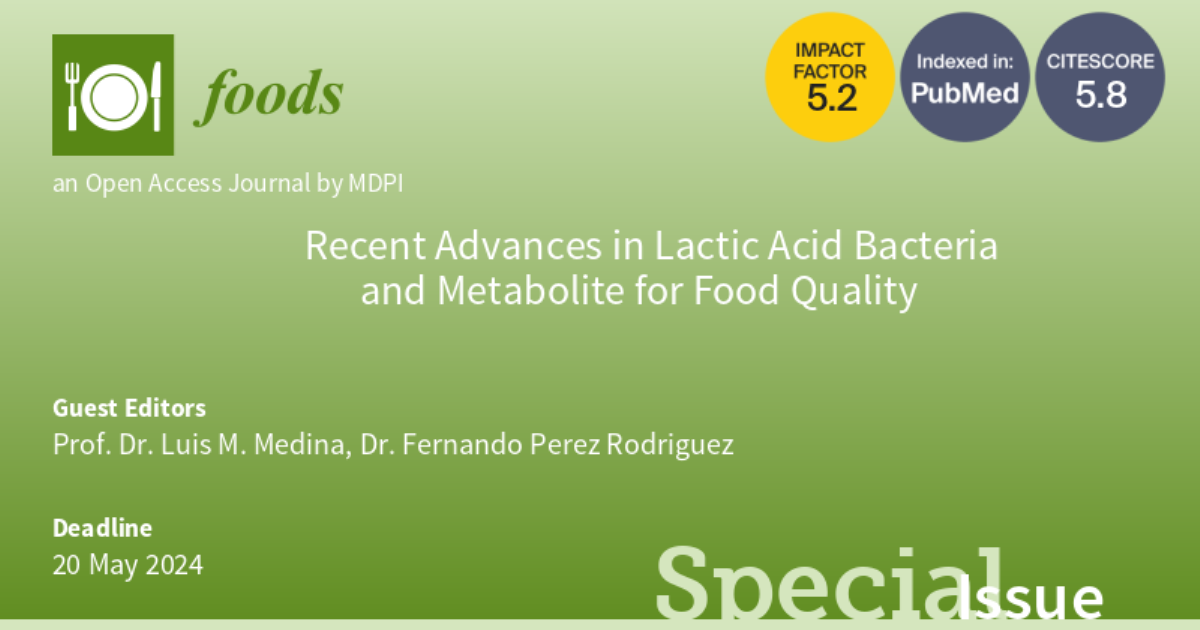Recent Advances in Lactic Acid Bacteria and Metabolite for Food Quality
A special issue of Foods (ISSN 2304-8158). This special issue belongs to the section "Food Microbiology".
Deadline for manuscript submissions: 20 May 2024 | Viewed by 11616

Special Issue Editors
Interests: food science and technology; dairy science; food microbiology and safety; food microbiology; probiotics; meat science; technology; dairy microbiology
Interests: microbial risk assessment; predictive modelling; food safety; sustainable food packaging; preservation
Special Issues, Collections and Topics in MDPI journals
Special Issue Information
Dear Colleagues,
Lactic acid bacteria are one of the main microbiological groups involved in food. Because of their action, we have some of the main traditional foods, especially in the Mediterranean and other areas. Furthermore, products synthesized by these microorganisms can improve the safety of existing products. The metabolism of acid lactic acid bacteria is the key to many of these contributions. Omics can deepen the knowledge of these micro-organisms, and provide selection and characterization criteria, with a significant economic impact on the food sector.
In this Special Issue, we invite submissions of articles that explore the selection and characterization of lactic acid bacteria, their occurrence in food, and the metabolic aspects that make them suitable for food use, especially their influence and effects, both positive and undesirable.
Prof. Dr. Luis M. Medina
Prof. Dr. Fernando Pérez-Rodríguez
Guest Editors
Manuscript Submission Information
Manuscripts should be submitted online at www.mdpi.com by registering and logging in to this website. Once you are registered, click here to go to the submission form. Manuscripts can be submitted until the deadline. All submissions that pass pre-check are peer-reviewed. Accepted papers will be published continuously in the journal (as soon as accepted) and will be listed together on the special issue website. Research articles, review articles as well as short communications are invited. For planned papers, a title and short abstract (about 100 words) can be sent to the Editorial Office for announcement on this website.
Submitted manuscripts should not have been published previously, nor be under consideration for publication elsewhere (except conference proceedings papers). All manuscripts are thoroughly refereed through a single-blind peer-review process. A guide for authors and other relevant information for submission of manuscripts is available on the Instructions for Authors page. Foods is an international peer-reviewed open access semimonthly journal published by MDPI.
Please visit the Instructions for Authors page before submitting a manuscript. The Article Processing Charge (APC) for publication in this open access journal is 2900 CHF (Swiss Francs). Submitted papers should be well formatted and use good English. Authors may use MDPI's English editing service prior to publication or during author revisions.
Keywords
- lactic acid bacteria
- bacteriocins
- probiotics







